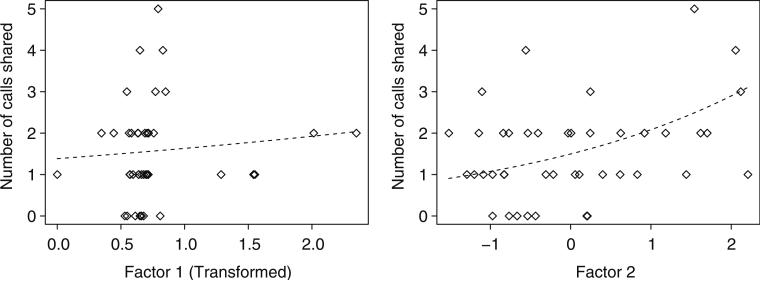Fig. 3.
Number of calls shared between pairs of birds plotted against rotated factors one and two from the PCA. Included in the analysis are weeks 10–19 after the formation of novel groups in the Social Association Phase. Variables with high loading values (all positive) for factor one were affiliative behaviors including the number of beak touches and warbles and the summed duration of the affiliative state behaviors. Variables with high loading values (all positive) for factor two were primarily aggressive behaviors (threats, pecks, and displacements) with the addition of courtship. The model was significant for factor two (aggression) only

